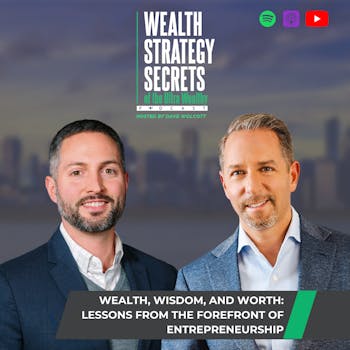Listen Here
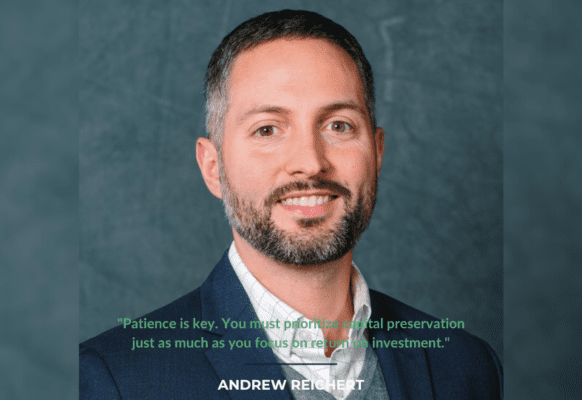 Today’s guest is none other than Andrew Reichert, the CEO and Founder of Birgo, a prominent private equity real estate firm based right here in Pittsburgh. With a staggering $312 million in assets under management spanning over 3,400 multifamily units, Andrew is a titan in the real estate investment arena.
Today’s guest is none other than Andrew Reichert, the CEO and Founder of Birgo, a prominent private equity real estate firm based right here in Pittsburgh. With a staggering $312 million in assets under management spanning over 3,400 multifamily units, Andrew is a titan in the real estate investment arena.
His keen entrepreneurial spirit not only drives the success of his business ventures but also extends to his vision for the future of real estate and entrepreneurship. Andrew’s dedication to community involvement serves as an inspiration, demonstrating that success is not only measured by financial achievements but also by the positive impact one can make in the lives of others.
Throughout our conversation, Andrew delves into his entrepreneurial journey, having founded four companies and contributed to numerous startups. We explore Birgo’s strategies for raising capital, purchasing, and effectively managing multifamily residential real estate, shedding light on key market insights and investment strategies.
Additionally, Andrew shares his passion for community involvement and nonprofit work, including his commitment to financial literacy through a nonprofit he founded and his active participation in local charities.
In This Episode
-
Andrew’s Entrepreneurial journey, his background and leadership
-
Transitioning to multifamily syndications and his real estate investment strategies
-
His current market insights and debt underwriting process
-
Personal insights and advice about the importance of community work and his involvement in non profit organizations
Welcome to today’s show on Wealth Strategy Secrets. Today, we’re joined by Andrew Reichert. Andrew is the CEO and founder of Birgo, a Real estate firm in Pittsburgh. He is also a serial entrepreneur who has started over four companies and is involved with several other startups. Birgo has over 312 million in assets under management and also oversees 3,400 Multifamily units.
Birgo is completely vertically integrated and has over 90 employees. One of the things you’ll find interesting about Andrew is his deep passion for nonprofits and the spirit of helping others with financial literacy and his local charitable organizations. Welcome to the show, Andrew.
Dave, thank you so much for having me on the show. Excited to be here.
Absolutely. It’s always great to connect with Andrew. I support your mission and what you’re doing on the nonprofit side. The other aspect of helping others is not only with financial literacy but also helping your investors in terms of their mission and the impact that you are creating. Tell us about how things started for you, how you got into Real estate, and how you became an entrepreneur. Was there a certain moment that got you going in this direction?
It’s about understanding what you need to know in order to invest well.
Those are great questions and I’m happy to share my story. I grew up in a family with little financial means. We grew up making ends meet day in and day out. Unfortunately, I had a bit of a rebellious childhood that culminated in me getting expelled from high school.
I tell people that I got my start in entrepreneurship from doing things that I shouldn’t have been doing. I was selling drugs and doing whatever I could in high school. That was my breaking point. I said, “I’ve got to decide to get my life together.” Specifically, this financial piece became interesting and impactful as I was accepted to college even after getting expelled from high school.
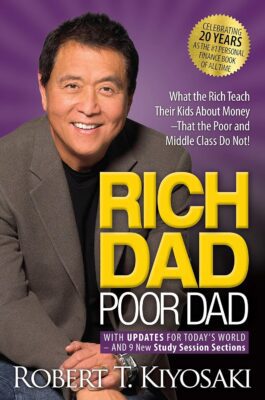
I read this book called, Rich Dad Poor Dad. I started to understand the mentality of wealth and the different quadrants that he talks about in that book of being an employee versus being self-employed versus being a business owner versus being an investor. And that was my exact path. Those are the four steps that I ended up taking. That was my launching pad into doing what I’m doing today.
Awesome. You took the purple pill, like many others out there. I found that fascinating as well at the time when I read it. When it came out in the cashflow quadrant, I found it powerful to simplify this concept that was explained in a way that no one has ever explained before.
That should be taught in high school, around financial literacy as how is the game played? One of the things that I found challenging was you would read those books and you understand that concept, but how do you put it into action? There was no blueprint, per se. Did you have some type of path once you got that inspiration? Was there something that led you down a particular path?
It was a crazy time because I read that book, but I had no money, no credit, and no experience. I had nothing to offer. I started reading all these books specifically investing in Real estate with no money down. So I graduated from college, it’s 2007. This is before the financial crash of 2008 and 2009.
The banks are doing crazy stuff. I end up buying a duplex with no money, no credit, and no experience. I walk away from closing with a check for twenty grand. It goes to show you the banks are doing things they shouldn’t have been doing. I had no business taking out a loan on a duplex that not only required no money down but also covered the entire amount.
I got a check for twenty grand at closing. I took that check and I was reading books about a short sale. The first one I bought with no money down. The second thing I did was I bought a short sale. I bought a property for right about twenty grand and paid all cash. This was a property that was worth about 100,000. It was self-educating. Then to your point, I learned by doing it. It’s one of those things where you have to jump in and do the thing to understand it.
That’s the full life cycle of learning – it’s learn and teach which is the key to doing it. But many of us don’t take action. They might read some of these concepts or be exposed to the concepts, but they don’t take action. When you can take that action, that propels you forward and not be afraid to make mistakes because we all make mistakes. But can you learn from those mistakes and then grow from them?
I made my share of mistakes and I have learned. I love it. There’s this Nelson Mandela quote. He says, “I never lose. I either win or I learn.” That was the case with my early investing career. That was certainly the case with my early life in general, dealing with adversity from being expelled and making bad decisions along the way. I viewed them as learning opportunities and I tried to do things differently the next year.
Makes sense. Was that your growth path from doing fixes and flips, to doing active type of investing to move into multifamily at some point? When did you transition to multifamily and syndications and start Birgo?
I had a great job after college and I was investing in Real estate passively on the side. Working for a large regional bank, I was taking my discretionary income and investing it all in Real estate at that point. I got to the point where I had twenty units that I was managing on the side, managing on my own.
I knew something I had to give. I had even a different startup at that point. I had a startup focused on financial literacy. I had this 20-unit portfolio that I was managing and a full-time job. I ended up resigning from PNC at that point and started what is now Birgo. What I wanted to do was take what I had been doing with my 20 units and bring that out to the masses. I couldn’t believe the economics of Pittsburgh. I could buy a single-family home for a hundred thousand dollars and I could rent it out for $1,200 a month. The mortgage was only $600 a month. The economics made much sense from a cash flow and even an appreciation standpoint. I said, “Can I scale this? Can I do this to the masses?”

There are many paths to make money and to build wealth. Partnering with experts in your specific investment area is one of the best ways to achieve that.
In 2015, I decided to launch a proof of concept fund. Our goal was to raise $10 million to prove this. We ended up raising $17 million and deployed that all into multifamily in the Pittsburgh area, about a 15-mile radius of downtown. We wanted to be able to drive to those assets. Purchased about 800 units and multifamily. That got us going in the path we’re in today.
Wow, that’s excellent. What markets are you specifically focused on?
The thing we look for is markets that are slow and steady up to the right. We’re not investing in the crowded, sexy areas right now; the Sunbelt and the coastal cities are where everybody else is investing. We like Pittsburgh, but we also like markets that are like Pittsburgh – markets that are undergirded by a good economy.
You’ve got the meds and the eds that we say, strong universities, strong healthcare systems, strong economies undergirding them. For us, that’s Pittsburgh, Cincinnati, Cleveland, Buffalo, and a bit of Morgantown, West Virginia. Those are the markets we’re investing in today.
Interesting. How is population growth in some of those markets? Is it slow and steady or has it curtailed what are you seeing?
Population growth is pretty flat in most of the markets where we invest and that’s fine. If you look at how we create value, we made it in three ways – one is the cash flow at our properties, which is the average rent. I gave that example earlier of what the economics look like. Average rents across our portfolio are around $800 a month.
But for us buying a property that’s currently rented is around $500 or $600 a month and increasing it to market. 750 for a one-bedroom, 950 for a two-bedroom – that kind of market. That generates cash flow. Paying down the mortgage generates IRR for our investors, an Internal Rate of Return. Then the appreciation that we create is not because the market is appreciating or because the population is going into the market.
Never lose. Either win or learn.
We create appreciation by increasing net operating income, which increases the value of the assets. We like to invest in markets that are stable from a population and a growth perspective because, to contrast that to another market that’s close to us; Columbus is a booming market, which is in between two of our markets. It’s halfway between Pittsburgh and Cincinnati. We’re not investing there because it’s overheated and because of all the population growth, there’s a lot of outside money that’s flowing into that market and we don’t buy the valuations there.
I can see that slow and steady is good in the game of investing. We’re all always enticed by shiny objects and things that can be sexy on the outside, but it’s all about that consistent growth, and putting it into a system that can grow over time.
How about from a debt perspective? It’s been a challenging market. How are you guys looking at Underwriting these days? What should investors be aware of when they’re looking at potential opportunities?
Interest rates have gone up. We used to be borrowing at 4%. Today, we’re borrowing at 7%. That has an impact on underwriting. There are a couple of things we’re doing – one, is whenever we can, we’re assuming the existing debt when we buy an asset. Sellers with debt at 4% that’s assumable now have an asset in their existing debt that we can take over.
That helps to make that an attractive acquisition opportunity for us. The agency lenders like Fannie Mae and Freddie Mac will let you assume the debt. We tend to be looking to buy assets that have good existing debt that we can assume. If we’re putting new debt on, that works its way into the Underwriting and makes the deals more challenging.
We used to do good deals that we would underwrite. We’re underwriting a lot of deals and passing on them right now. But that’s okay because we’re still seeing a lot of deals and we’re still seeing good deals to be done. Some deals can be done in any market.
What we’re seeing right now is they tend to be more distressed deals than we’re buying. Maybe the sellers got themselves into trouble with the cash flow of the property or the existing debt of the property. It allows us to bail them out and create a good investment opportunity for our investors. Those are the kinds of deals that we’re doing now, but certainly, underwriting is more challenging in this market.
Are you doing any C class? Or is it mostly B?
We’re squarely right in B. We don’t touch A or C. We’ve got some, what I would call, B- or B+ depending on the asset. We do have some assets that have some light amenities to them. But if you look at our average rents again, $800 across our portfolio, it’s the working-class individual who is our typical tenant. I live paycheck to paycheck or above that. I tend to be a sticky tenant base – folks who stick around in a unit for a while.
What do you think investors should be considering in 2024 when it comes to Multifamily Real estate?
There are a couple of things to consider, one is what are interest rates going to do? The Fed has maybe been signaling some cuts. Rate cuts would provide some relief and make some of that underwriting we were talking about; attractive. If I’m an investor, not that I have to be an economist, I would be paying attention and thinking about Interest Rates. I think there are a lot of operators, particularly multifamily operators; like syndicators, for example, who have gotten themselves into trouble, gotten out over their skis.

The key is to focus on what you do best and align it with your purpose, then leverage that to grow your portfolio with the help of experts.
At least in our firm, we’re taking a conservative approach to underwriting and deals in general reserving capital and making sure that we’re setting ourselves up for a strong future ahead. If you’re investing in multifamily, make sure you’re taking the long-term approach. Don’t be too short-term focused. It’s a marathon, not a sprint. Make sure you’re sticking with the fundamentals, underwriting deals well, and not getting out over your skis.
What do you guys typically look at for LTV (Loan-to-Value)?
In the early days, we were able to borrow 75% to 80% loan to value. Those have come down for two reasons, one, we’re often assuming the existing debt right now if we can. The existing debt is typically not as high. We’re assuming debt that’s 60% loan to value or somewhere thereabouts. Then lenders, because of the higher interest rate right now are often lending at lower loan-to-value. Rates ratios typically in the 70 to 75 percent is what we’re seeing for new debt.
That’s interesting. A lot of operators have different takes on the LTV perspective. Of course, it all depends on the market, asset type, and business model. There are many variabilities to it. But great points in terms of things that people should be thinking about. We’ve certainly been cautious in this market. Even a lot of the distressed opportunities that have been coming across our desk.
We still think they’re overvalued. They need to have strong fundamentals across the board. Being exclusive and being selective in opportunities is going to be key and defining what that buy box looks like for you; can be one of the things that can help investors, which is getting real clarity on what your strike zone looks like for opportunities. Constantly developing that and then your due diligence process so that you can look at more opportunities and figure out which ones fit into yours.
That’s exactly right. Everybody has a different risk-return spectrum and where they are on that. To your point, it’s understanding your buy box. It’s hard to be educated about everything to know enough about Real Estate, Private Credit, and Self-Storage. Even within Real estate, there are many asset classes. It’s understanding what is it that you can know that you can invest well. If you can have that target niche, then hiring a professional who can do some of that for you is the next best thing.
Because that’s what this is all about – leverage. People always talk about leverage or in Robert Kiyosaki’s terms, it’s OPM (Other People’s Money), and trying to scale. But we often overlook that in passive syndications – you get leverage with people engaging with a team like Andrew’s that has almost a hundred employees and a strong track record.
You can completely get access to that team of world-class property management, acquisitions, and all of that experience to be able to make the right decisions. That’s why we talk a lot about investing in the jockey, not the horse. It’s all about the people behind the thing. Any other thoughts or perspectives you would have on that?
Specific to that, you’re 100% right. We talked earlier about some of the mistakes we made in the early days and how we’ve learned from them. The reality is that folks who often try to do it alone, are often making the same mistakes that we made and we learned from, that we built systems and processes around to not make those mistakes over the past ten years.
There are multiple paths to make money. There are multiple paths to retain and continue to build wealth. Working with people who know the specific area in which you’re looking to invest can be a great way to do that.
For sure. When I started originally getting into Real estate myself and looking at single-family rentals, and duplexes, and trying to run all the math. I was gung ho as I was to get into the asset class. I found it very risky because I was making all these assumptions based on what I knew, which wasn’t much.
A life plan starts by envisioning the end and working backward to achieve it.
You’re competing against people in any market who are doing it all day long, who’s been doing it for decades, and who have inside information to know how a deal is. A lot of people get bruised up, or maybe they’re lucky and you have some good ones on the single-family side. But that’s why most people will scale up in passive-type syndications. The key is focusing on what you do best and what your purpose is, then trying to get leverage to grow your portfolio with the experts.
Agree.
Tell us about your non-profit and how that is set up. What is your involvement? What is your mission there?
I’ll give you the history there. When I first got into Real estate, I told the story that it was about Real estate as an investment. I didn’t realize that Real estate is much more than an investment. It’s the roof that you put over somebody’s head. It’s the places where people work. It’s the fabric of our community. As I started to learn that, it became exciting and intimidating at the same time. One of the things I realized is that, for the profit side of our business, the transaction is simple: we provide a roof over your head, and you pay the rent. If you don’t pay the rent, it leads to eviction. That was hard for me.
I had to physically be there when we were doing lockouts for our residents who didn’t pay the rent, watching them cry and taking them back to get their stuff that was left in the unit. It is an emotionally draining, difficult process. I asked myself the question, “What can we do to extend grace to people who maybe fell on some hard times and don’t have the money to pay their rent right now? How can we extend grace while still holding them accountable?” Because we certainly don’t want to be taken advantage of.
This was my portfolio. But as we’ve grown, we have to be stewards of our investor capital. So we have to do right by our investors too. A few years into having the Real estate business started a non-profit. The goal was to help residents understand the parameters of personal finance and help with financial literacy.
Could we get them back to pay the rent, keep them in their units, and help them long-term? That was the nonprofit that we started. Hired an executive director, ran a bunch of our residents through a couple of cohorts of financial education, had some great results, had some folks who were delinquent, and ended up becoming performing tenants and staying in their units.

Understanding your ‘Why’ empowers you to break through barriers, navigate life’s challenges, and live with greater intention.
The transaction was, “Resident, if you’re a month behind on your rent, we will withhold the eviction process as long as you go through these education classes. We’ll pay you $100 per month for every month you go through these education classes. That will help you get caught up as long as you can continue with the payments.” It worked. We had some great results.
Unfortunately, when COVID happened, we weren’t able to do the in-person cohorts. And frankly, virtual cohorts for that particular tenant base weren’t an option. We did end up shutting that down when COVID happened. We’re currently engaged in conversations around what that could look like to launch that again and scale it up. But it produced great results in the time that we were doing that.
I love it. Trying to help the communities and other people. It’s a whole win-win situation, 360 degrees. Very nice. You and I have talked a lot about personal productivity and biohacking. Have there been a couple of key things for you that have helped keep your head afloat and charging forward every day?
It’s one of my favorite topics in the world. I could talk about this for a long time. One of the things that’s interesting about my journey is I got diagnosed with cancer. This is the 10th anniversary since I was diagnosed with cancer. I was one year into marriage with my wife and I’m told that I might not live.
Even if I do live, we may never have children. If you could imagine being one year into marriage and watching my wife’s eyes tear up as she’s getting that news, it was impactful. Over the past decade, I’ve put myself on this journey of learning everything that I can about personal development, health, and fitness.
Thank God I’ve been cancer-free now for that entire time. That particular cancer is long gone and I won’t have to deal with that again. But now I’m in more of the prevention phase. It’s how I can make sure that this never happens to me and I’m also caring about my wife. As a miracle, we have three little girls now. It’s thinking about them and how I can make sure that they don’t make the mistakes that I made early in my life that may have led to the best health and fitness habits.
I’ve created an operating system. We run our business on what’s called the Entrepreneurial Operating System or EOS. I’ve created this operating system for personal development that we call the Rhino Operating System or ROS. We’re obsessed with the Rhino here. The reason I love Rhino is because it’s a picture of resilience. It charges ahead.
It’s got thick skin. It’s hunting and it’s been endangered. The population of Rhinos now is growing. Rhino is not going anywhere because it’s resilient. And the system that we call a Rhino Operating System (ROS) has five components. It starts with the Who, Understanding your Unique DNA, Why, Understanding your purpose, and then What.
Take your Why and your Who, and understand What should you be doing – the combination of your passion, your proficiency, and your preparation. From there, the How is the actual execution of that, then the When is all about daily rhythms of execution. I’ve got tons of stuff I do in every single one of those five components.
I could talk about it all day. If I had to pick one thing, it’s the When component, which is my morning routine. My morning routine is my anchor keystone habit. It has a bunch of components in my morning routine and takes me about 90 minutes. When I do it, I’m on track. I’m feeling great. When I don’t do it, I feel like I’m drifting and totally off track.
First of all, congratulations on remission and creating a family. That’s amazing, Andrew. I love the framework. All of this thinking; and this is why we created the Holistic Wealth Strategy as well. It is to help people frame things up so they can pragmatically think through them, and set their compass the right way to make a difference. If you could give us one example of what would be the top thing in your ROS – the morning routine is one, but what else would be something that’s core to that being successful?
I would pick a couple of things. If I had to pick one, I would pick the Why component – having a life plan. A life plan is where you begin with the end in mind. When I’m no longer here, how do I want to be remembered? It’s a morbid thing, but what do I want to be said about me at my funeral?
I feel that few people ask the question, “What do I want to say about me when I’m no longer here?” From there, I come up with my life accounts. For me, it’s a spiritual, physical, mental, emotional, parental, marital, social, financial, vocation, and avocation. I have these ten life accounts.
In each of those, I set an envisioned future as “What should this look like ten years from now?” I set my purpose in each of those then I work backward from there. That is a key important piece of understanding why are we doing what we’re doing. I feel that few people think about that, they go through these daily motions doing their job, and they haven’t connected it to their broader purpose.
That is powerful. Understanding ‘Why’ allows you to break down doors. It allows you to get through the challenging times in life and live; much more of an intentional life. I love that you have that focus there. Tell us about your morning routine. What does it look like?
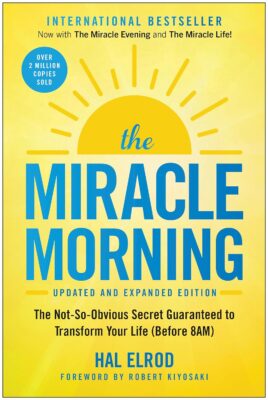
I have to tell you, I can’t take credit for it. A guy by the name of Hal Elrod wrote a book called Miracle Morning. I met Hal last month and got to shake his hand and tell him, “When I had cancer, I read your book.” Right after I got diagnosed, I read that book and it changed my life. I got to shake his hand and thank him for that.
There’s this acronym that he talks about in that book, and this is the exact thing that I do today, and it spells out savers. He calls them his life SAVERS. He had been in a terminally ill situation himself. He was in a terrible car accident, had died for six minutes, and had to be resuscitated back to life. This was his morning routine. Having gone through adversity myself, I consider it a privilege to have adopted the same routine.
S stands for Silence. For me, it’s silence and prayer. I’m a person of faith, so I spend some time in the morning being quiet and praying. A is for Affirmations. Affirmations get a bad rap, they tend to be thought of as woo-woo stuff, but it’s affirming what is already true about myself and about where I’m headed. V is Visualization. I visualize my day and visualize myself in my meetings and the things that I’m doing that day going well.
E is for Exercise. I’ve got to exercise every single day. I love the feeling after I exercise. R is Reading. I’m working on growing my knowledge base, but also reading things that are life-giving to me. Then the last S is Scribing, which is journaling. The acronym needed an S there instead of a J, but I do journaling pretty much every day if I can.
Awesome. I love it. If you could give one piece of advice to the audience about how they could accelerate their wealth trajectory, what would it be?
This may be counterintuitive, but the piece of advice that I would point to is remembering to be patient and that it’s a marathon and not a sprint. Honestly, ignore anything that looks like a get-rich-quick scheme, the thing that I’m passionate about is getting rich slowly. It’s a game where the preservation of capital is important.
Invest in what you feel comfortable and confident with, rather than getting out over your skis and trying to swing for the fences.
You don’t want to make bad investment decisions where your net worth is going backward. You’ve got to be patient. You’ve got to think about preservation of capital as much as you’re thinking about return on investment. Invest in what you feel comfortable and confident with as opposed to getting out over your skis and trying to swing for the fences.
Sage advice, Andrew. It’s been a pleasure having you on the show. I appreciate all of the wisdom and insights that you’ve been able to share. If people want to connect with you or learn more about what you’re doing at Birgo, what’s the best place for them to connect?
Thanks, Dave. I’m active on LinkedIn. Our website is www.birgo.com. We do have a podcast as well where we talk about investing – called the Real Returns Podcast. You can find Birgo Capital on social media – Instagram, Facebook, and LinkedIn – all over. Feel free to shoot us a note if we can be of any support.
Thank you so much for coming on, Andrew.
Thanks for having me on the show, Dave. It was a lot of fun.
Important Links
Connect with Andrew Reichert
Connect with Pantheon Investments
Books Mentioned
People
Further Resources
Your 10-Step Actionable Checklist From This Episode
✅ Determine the steps you need to take to transition from employee to investor. Consider taking actionable steps, even if it means starting with little to no resources.
✅ Begin with smaller investments, like a duplex or single-family home, and gradually scale up as you gain experience and confidence.
✅ Target markets with steady, predictable growth, even if they aren’t the most popular or fastest-growing areas. Look for strong local economies supported by healthcare, education, and other stable industries.
✅ In a challenging market, take a cautious approach to underwriting. Prioritize deals with strong fundamentals and avoid over-leveraging.
✅ Clearly define your criteria for investment opportunities. Regularly refine your buy box to ensure you’re focusing on deals that align with your risk tolerance and financial goals.
✅ Leverage the experience and systems of others in the industry to avoid making the same costly mistakes, especially if you’re new to real estate investing.
✅ Concentrate on what you do best and align your investments and activities with your core purpose to achieve better results and growth.
✅ Implement a consistent morning routine that includes silence, affirmations, visualization, exercise, reading, and journaling to set a positive tone for the day.
✅ Approach wealth building as a marathon, not a sprint. Focus on the preservation of capital and avoid high-risk, get-rich-quick schemes.
✅ Stay active on professional networks like LinkedIn, and connect with others such as Birgo Capital and Real Returns Podcast to expand your knowledge and opportunities in your investment journey.
About Andrew Reichert
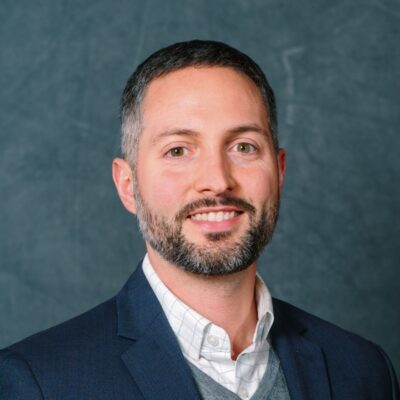 Andrew Reichert is the CEO and founder of Birgo, a Pittsburgh-based private equity real estate firm managing $315 million in assets across 3,300+ multifamily units. Since 2012, he has grown Birgo to over 90 employees, focusing on capital raising, property acquisition, and management. Andrew’s leadership has helped investors build wealth while fostering strong communities. A dedicated entrepreneur, he has founded four companies and worked with various startups, consistently empowering people to achieve more.
Andrew Reichert is the CEO and founder of Birgo, a Pittsburgh-based private equity real estate firm managing $315 million in assets across 3,300+ multifamily units. Since 2012, he has grown Birgo to over 90 employees, focusing on capital raising, property acquisition, and management. Andrew’s leadership has helped investors build wealth while fostering strong communities. A dedicated entrepreneur, he has founded four companies and worked with various startups, consistently empowering people to achieve more.

